- Create
- Market
- Scale
create
market
A strategic marketing funnel is designed to build a robust sales pipeline and nurture new customers throughout the buying process— from the awareness stage to the interest stage to the decision stage.
Sales funnels can range from a simple two-step process to highly complex, multi-channel, and segmented marketing campaigns. Regardless of where your business is today, all funnels are going to include these main components:
Let’s take a look at seven tried-and-true sales funnel examples, so you can see exactly how these digital elements come together to create an irresistible offer.
Learn more about how the three stages of a sales funnel work in our beginner’s guide to digital funnels
A ”squeeze page”, also known as a lead capture page, is a simple landing page designed with the primary goal of collecting contact information from your target audience. Unlike a service page or homepage, it typically consists of a concise and focused message that offers a lead magnet of value to the visitor in exchange for their email address. Stripping away distractions like website navigation, external links, and company FAQ keeps potential customers focused on signing up.
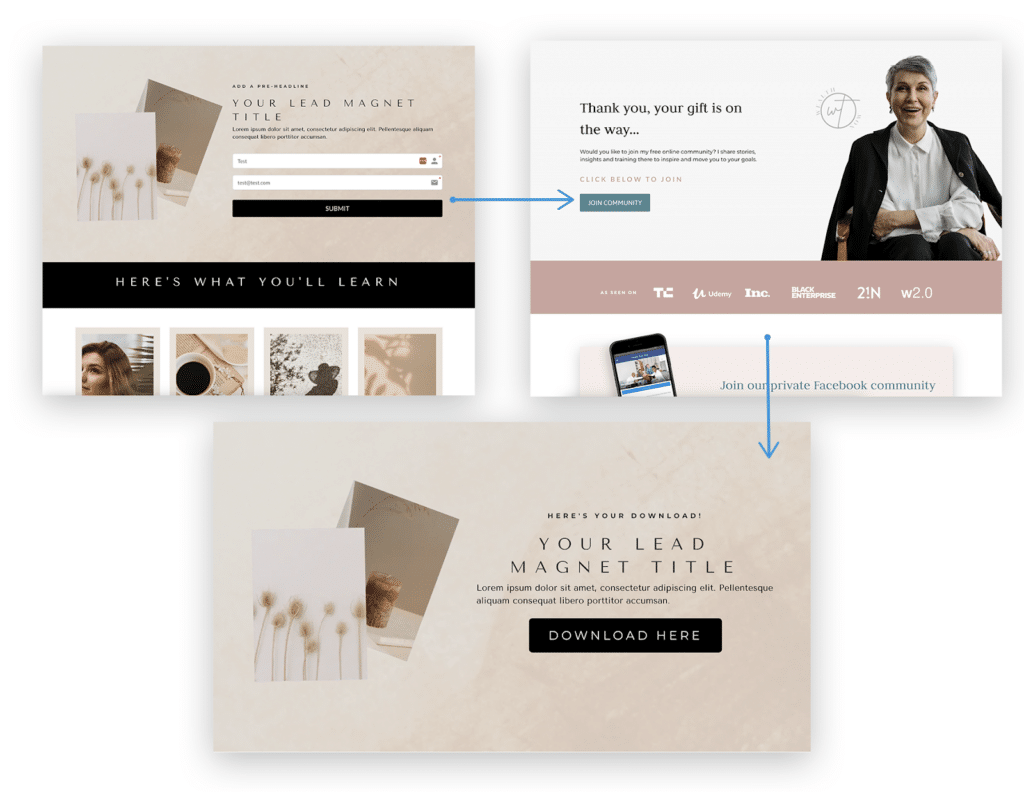
Like this funnel? See a live demo of this landing page here: Squeeze Page Demo
If you’re a service-based company like a real estate agent, accountant, lawyer, or consultant, a free appointment offer is an effective sales funnel. Prospective customers who sign up for consultations are typically in the interest stage of the sales funnel, so it’s key to make a personal connection and build trust through your sales page and digital marketing content.
In this example, a conversion-optimized landing page generates sign-ups for free consultation appointments, which the consultant can then leverage as a bottom-of-the-funnel marketing strategy to help convert prospects into paying customers.
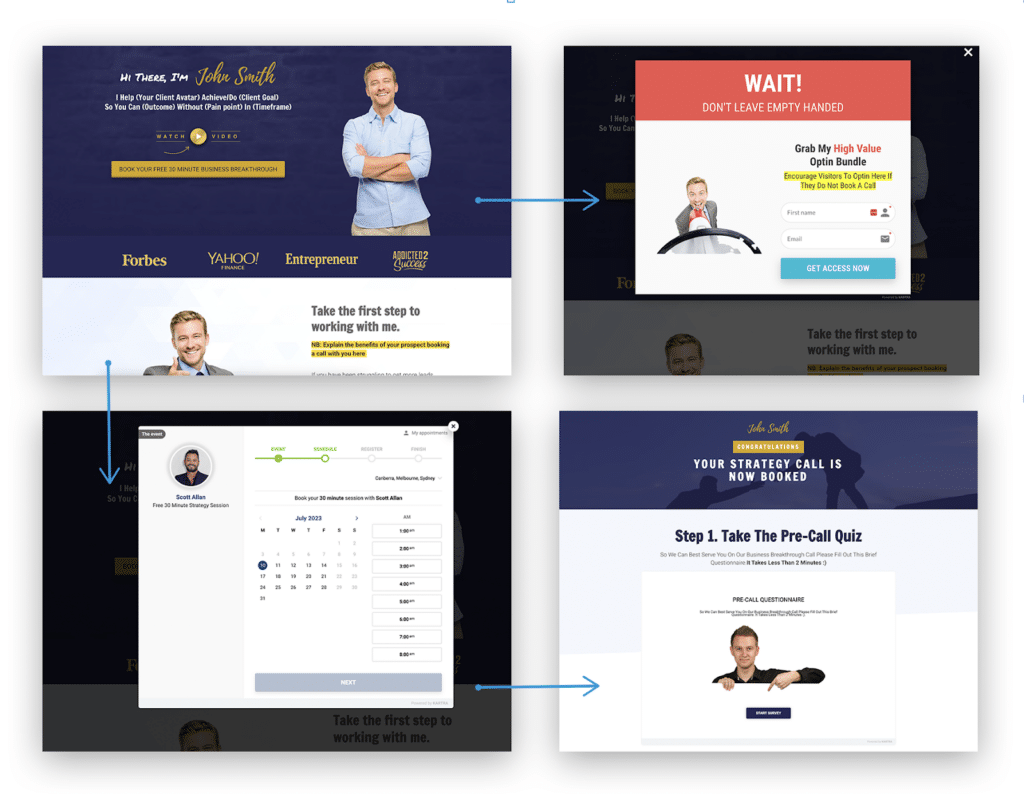
Like this funnel? See a live demo of this landing page here: Free Call Demo
Webinars and video events are one of the most effective forms of digital content marketing, with an average conversion rate of 40%. They can be either live or pre-recorded, and may also be repurposed for on-demand viewing in an automated funnel sequence.
Everything about this webinar funnel example is designed for quick conversions: a beautiful, minimalist landing page design puts all the focus on sign-up. A simple opt-in process encourages sign-ups, and the webinar content is available right away on the registration page.
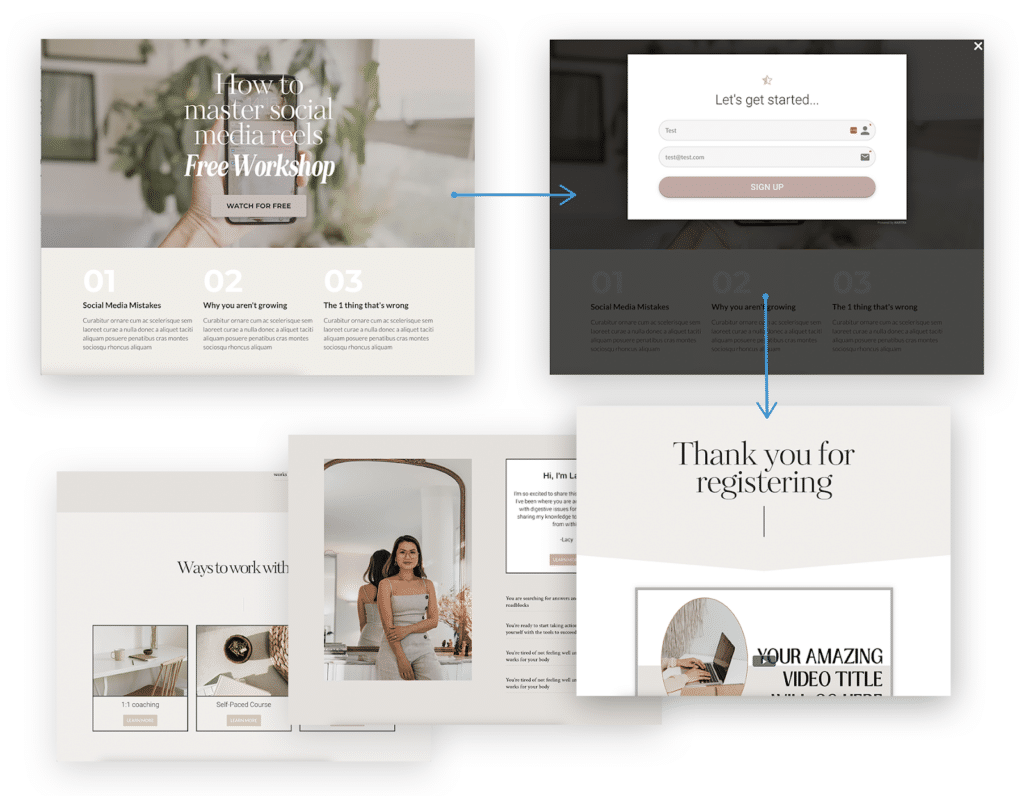
Like this funnel? See a live demo of this landing page here: On-Demand Webinar Demo
Dive deeper into how to build your own sales funnel from top to bottom: check out our step-by-step guide
Anyone who shops online today has probably encountered a coupon funnel on an eCommerce store. But this popular marketing strategy can work beyond online product businesses! Coupons are a powerful source of lead generation for restaurants, cleaners, plumbers, photographers, and all sorts of other service-based companies.
Coupon offers are often used to build email lists of prospective customers at the top of the funnel. Coupon funnels can also be paired with cross-sell funnels to offer special pricing for returning purchasers. Tracking purchases and promoting related products and services to existing customers is a great strategy for customer retention.
In this example, the opt-in form is placed in a pre-header right at the top of the page. Due to the high volume of traffic restaurants and local small businesses receive from Google search, it’s important to make the coupon easily accessible on every page of the website. This ensures that all visitors have the opportunity to opt-in for the coupon without hindering their ability to locate essential web pages such as menus, hours, and reviews.
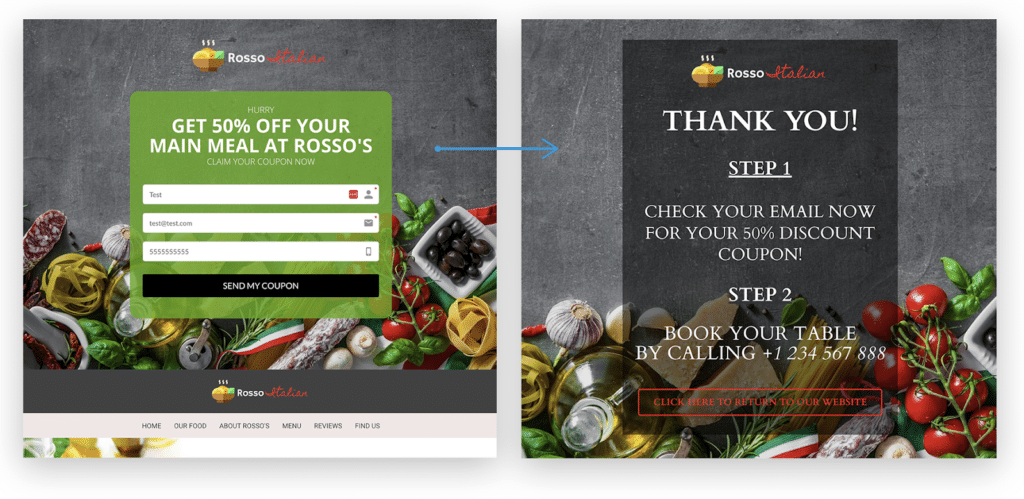
Like this funnel? See a live demo of this landing page here: Coupon Demo Page
A free + shipping funnel offers a low-cost product, sample, or service as a way to generate leads. Even though this funnel requires a purchase, it’s not typically intended to create profits. This type of offer is used to entice potential customers to join a mailing list or try a product with an offer that is too good to refuse, laying the foundation for an upsell to a paid product.
In this example that utilizes a free + shipping offer in an upsell funnel, customers are drawn in by the offer of a “free book,” but pay an amount for shipping and handling. After signing up for the free product, they receive an offer for a related product they can upgrade to buy.
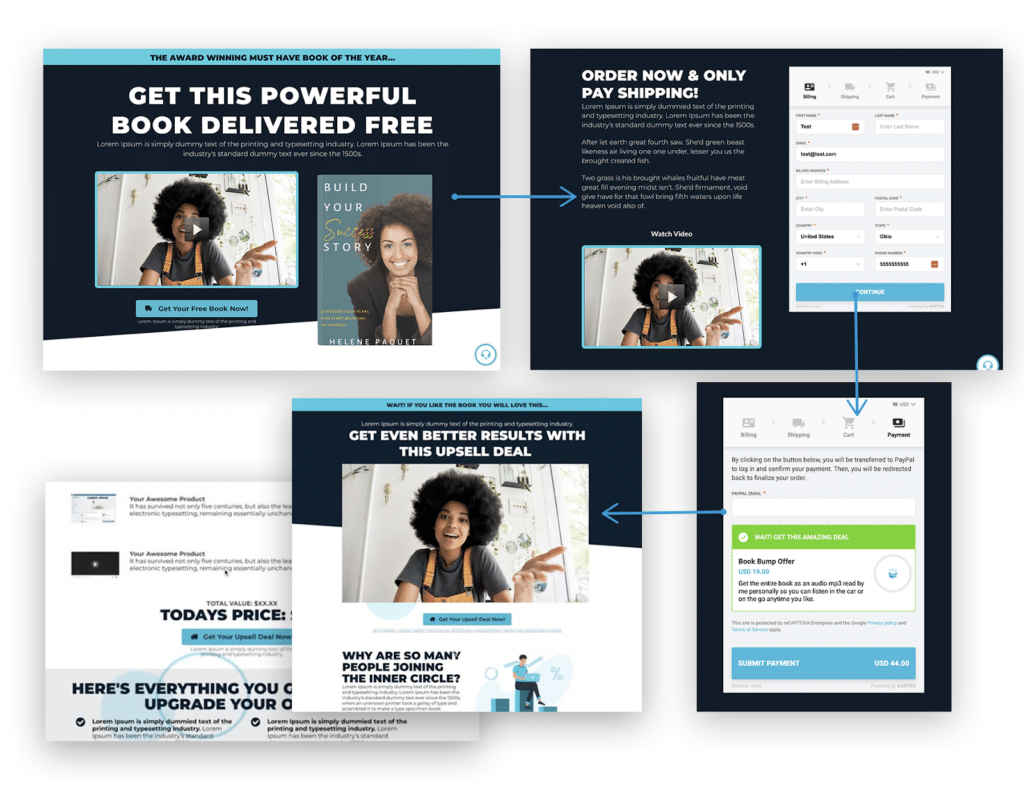
Like this funnel? See a live demo of this landing page here: Free + Shipping Book Demo
A video marketing funnel combines the power of video content with an automated email drip campaign to nurture leads and guide them through the marketing funnel toward a purchase. Video mini-courses require a lot of dedicated attention from prospects, so this technique is especially powerful for coaches, consultants, membership programs, and SaaS companies to nurture middle-of-funnel targets into the action stage.
In this funnel example, visitors opt-in to a free video series or through a targeted squeeze page. Over the next few days, they receive a new email each day with the next video in the series. At the end of the free course, participants receive an offer for a paid service, subscription, or product.
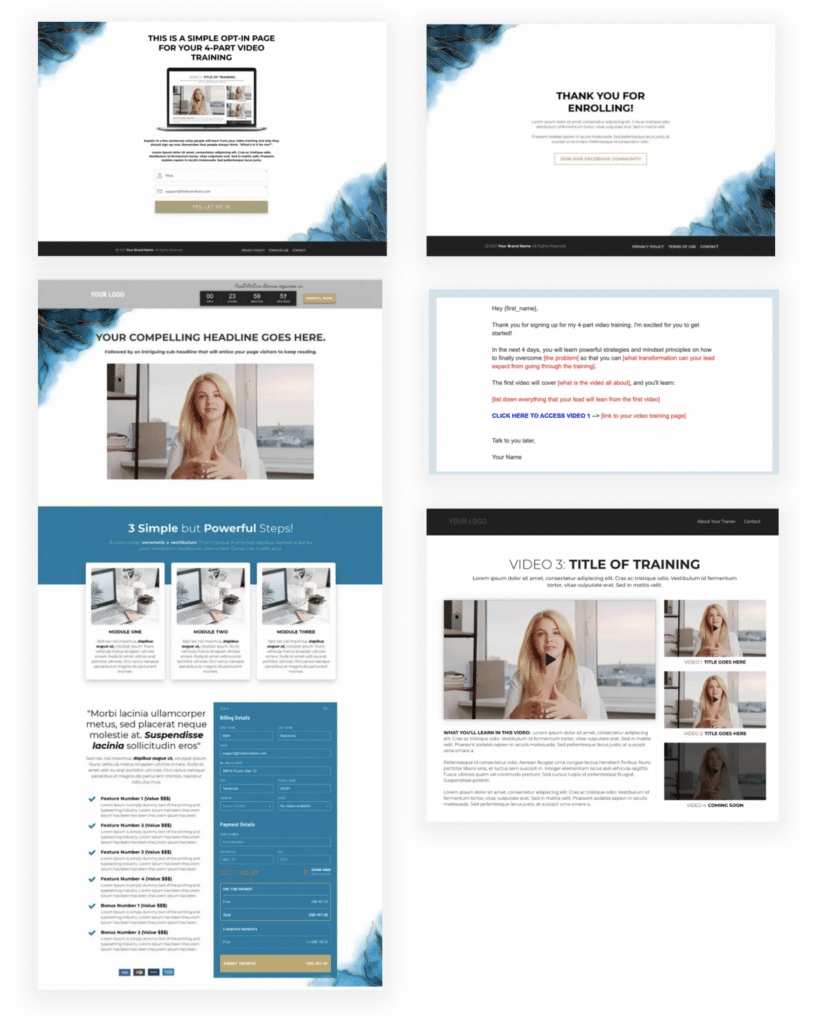
Successfully launching a new product or service takes a highly coordinated marketing effort. Launch campaigns typically consist of multiple smaller funnels tied together through a network of tags and automated triggers. These can be complex systems that combine lead magnets, case studies, upsells, special pricing discount opt-ins, affiliate referrals, and other tactics to generate buzz throughout the sales process.

Ready to start building your sales funnels? Kartra offers an all-in-one marketing platform with access to every vital feature of a sales funnel: funnel mapping, landing pages, opt-in forms, checkout, email automation, lead tagging, memberships, metrics, and more. Our extensive library of plug-and-play campaigns and templates makes it fast and easy to activate funnel sequences that have already been tested and proven by the pros! In fact, all seven of these sales funnel examples you’ve seen today are available in Kartra’s done-for-you marketplace.
Everything you need to build and optimize advanced sales funnels is already interconnected within our ecosystem.
Learn more about how Kartra’s Funnel Building Software can help your business thrive
This blog is brought to you by Kartra, the all-in-one online business platform that gives you every essential marketing and sales tool you need to grow your business profitably – from sales pages and product carts to membership sites, help desks, affiliate management and more. To learn how you can quickly and easily leverage Kartra to boost your bottom-line, please visit kartra.com.